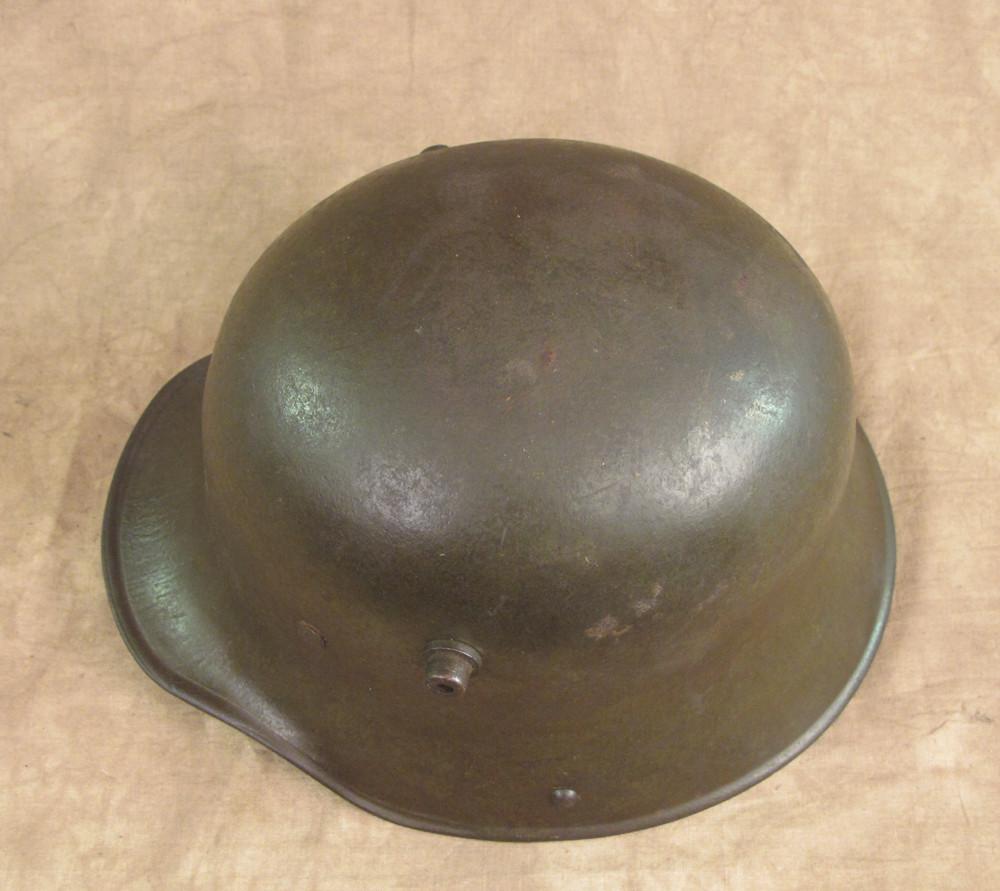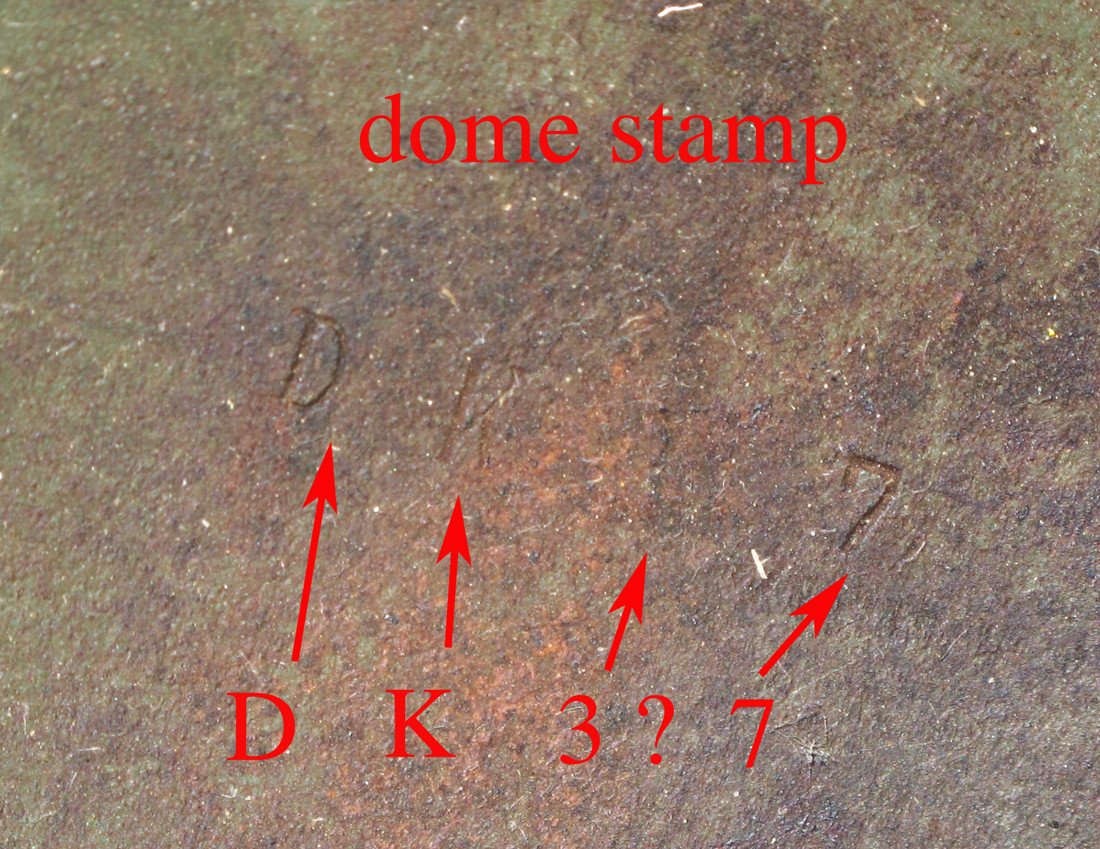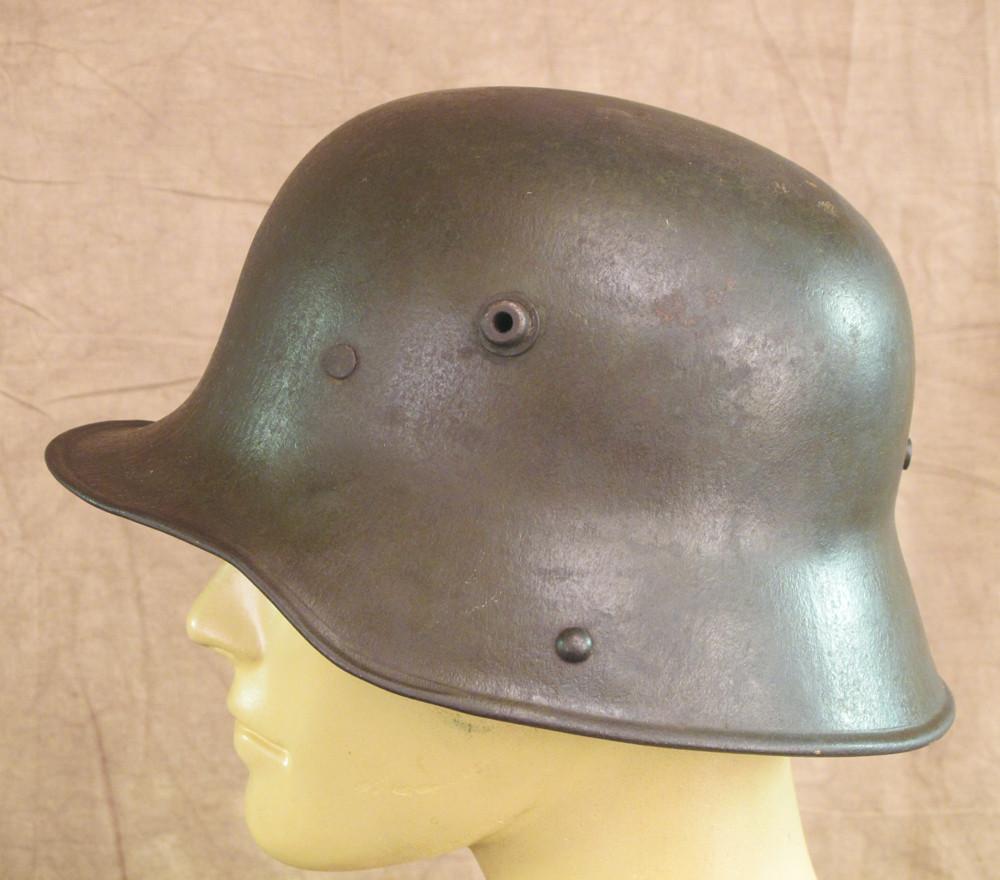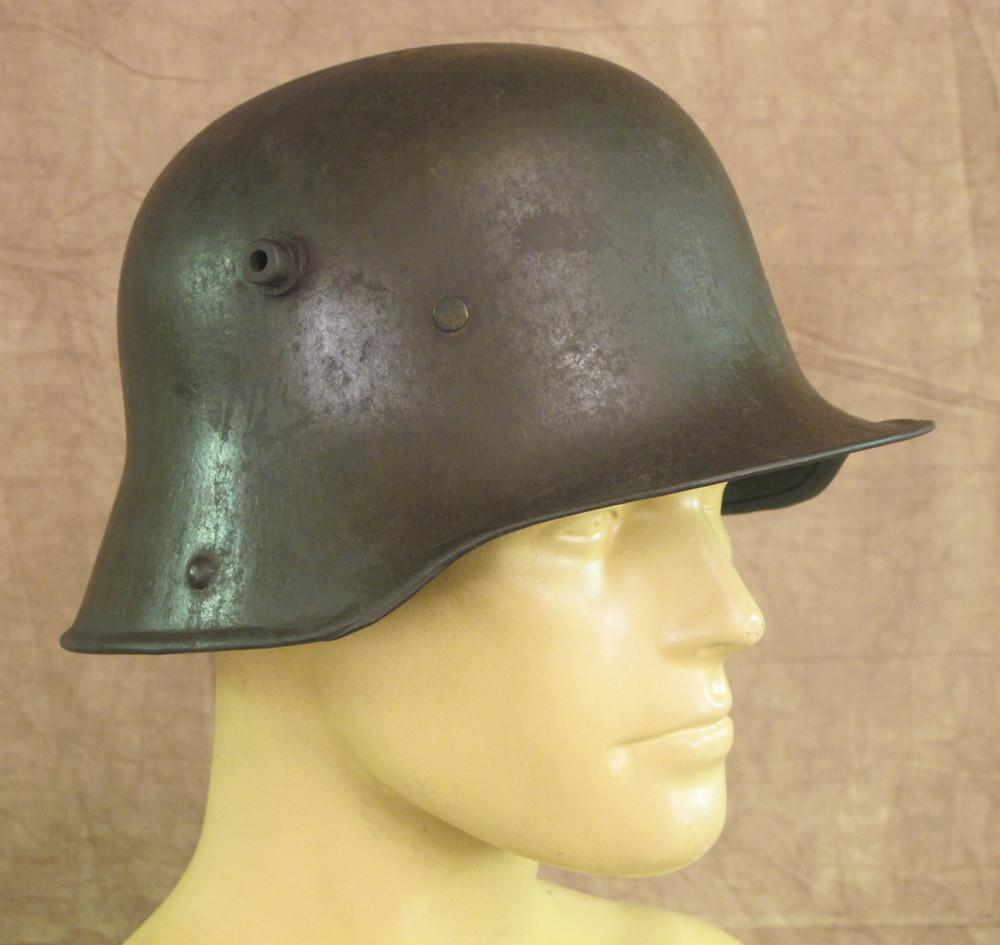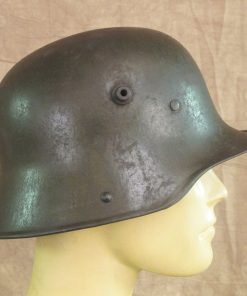Original German WWI Stahlhelm M16 Helmet- E.T.64 Original Items
$ 795,00 $ 238,50
Original Item: Only One Available. This is a fine example of a totally original WWI German M16 Helmet. The stamped, sheet steel construction, helmet retains about 80% of its original feldgrau paint with a nice overall patina. The helmet has both the dome headed chinstrap retaining rivets, both of the extended ventilation side lugs and all three of the flat-headed liner retaining rivets.
The interior of the helmet has the early all leather pattern, three pad leather liner with steel retaining band intact. All three leather pads are complete and all still have their original horsehair stuffing. Pads are a bit stiff and are still firmly held in place. All of the six liner string adjustment tabs are intact, and even the liner string is still present (probably a replacement). The chinstrap is a high quality reproduction. Shell is marked “E.T. 64”, indicating manufactured it was manufactured by Eisenhuettenwerke Thale A.G., Thale /Harz size 64 (originally intended to accommodate head sizes of 56cm to 58cm or US 7 to US 7 ¼).
There is also a dome stamp. On the inside dome of every WWI German helmet you will find a heating lot code, these codes were used by the factories during production. In many cases the heating lot code will indicate where the steel was milled. These steel mills are called rolling mills. The dome stamp in this helmet is quite clear and reads DK37.
With the 100-year anniversary of world war one approaching in 2014, this helmet, offered in very good collectible condition, is a perfect additional to any Great War collection.
History of the M16 Helmet-
The first “modern” steel helmets were introduced by the French army in early 1915 and were shortly followed by the British army later that year. With plans on the drawing board, experimental helmets in the field, (“Gaede” helmet), and some captured French and British helmets the German army began tests for their own steel helmet at the Kummersdorf Proving Grounds in November, and in the field in December 1915. An acceptable pattern was developed and approved and production began at Eisenhuettenwerke Thale A.G., Thale /Harz, in the spring of 1916. These first modern M16 helmets evolved into the M18 helmets by the end of WWI. The M16 and M18 helmets remained in usage throughout the Weimar Reichswehr era and on into the early years of the Third Reich until the development of the smaller, lighter M35 style helmet in June 1935.
Fast Shipping with Professional Packaging
Thanks to our longstanding association with UPS FedEx DHL, and other major international carriers, we are able to provide a range of shipping options. Our warehouse staff is expertly trained and will wrap your products according to our exact and precise specifications. Prior to shipping, your goods will be thoroughly examined and securely secured. We ship to thousands clients each day across multiple countries. This shows how we're dedicated to be the largest retailer on the internet. Warehouses and distribution centres can be located throughout Europe as well as the USA.
Note: Orders with more than one item will be assigned a processing date depending on the item.
Before shipping before shipping, we'll conduct a thorough inspection of the items you have ordered. Today, the majority of orders will be delivered within 48 hours. The delivery time will be between 3-7 days.
Returns
The stock is dynamic and we cannot completely manage it because multiple stakeholders are involved, including our factory and warehouse. So the actual stock may alter at any time. It's possible that you may not receive your order once the order has been made.
Our policy is valid for a period of 30 days. If you don't receive the product within 30 days, we are not able to issue a refund or an exchange.
You can only return an item if it is unused and in the same state as the day you received it. You must have the item in its original packaging.
Related products
Uncategorized
Australian WWII Owen MK1 Machine Carbine SMG Custom Fabricated Replica with Sling Original Items
Uncategorized
Uncategorized
Angolan Rebel 1970s era 60mm Inert Display Mortar from Angolan Civil War Original Items
Uncategorized
Uncategorized
Armored Burgonet Helmet & Polearm from Scottish Castle Leith Hall Circa 1700 Original Items
Uncategorized
Uncategorized
Uncategorized
Uncategorized
Uncategorized
Uncategorized
Uncategorized
Uncategorized
Uncategorized
Uncategorized
Uncategorized
Uncategorized

